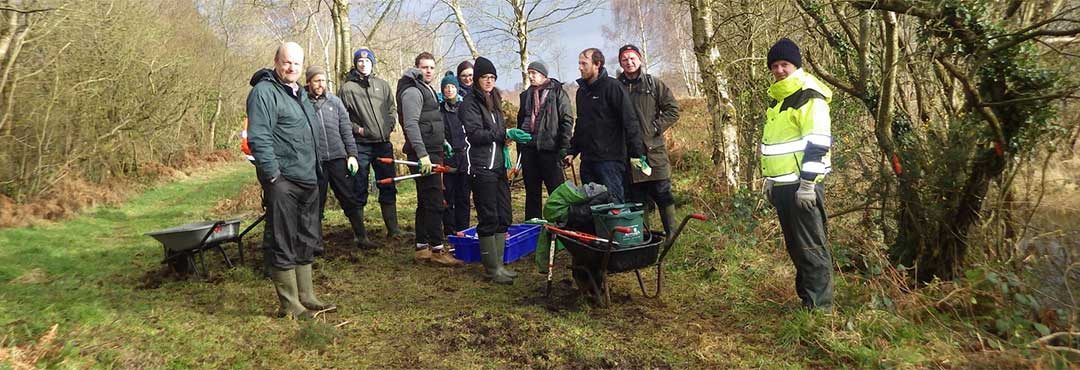Latin name: Passer domesticus
Family: Passeridae
Description of the House Sparrow
The house sparrow lives in UK all year. It is a small brown bird that lives close to people wherever they live. The male has a chestnut brown streaky back, grey crown and grey underparts with a black bib (the size of the bib indicates the dominance of the male bird within its community; the bigger the bib, the more dominant the bird). The female is grey-brown with darker streaks.
They emit a series of chirps and twitters, strung together as a rudimentary song.
Size
They are around 13cm and the wingspan about 23cm.
Historical Info
In the past the house sparrow’s likeness for crops resulted in farmers attempting to control their numbers. In the 18th century, sparrow clubs existed to destroy as many sparrows as possible and money was paid to do so until the late 19th century. However, it was recognised that this was not an effective means of controlling numbers. At the same time house sparrows were being introduced to other parts of the world where they also caused concern because of their impact on crops.
In the 1950s, the UK house sparrow population was estimated at 9.5 million, this increased to 12 million by the early 1970s. In the 1990s the population had declined by 62%. They are declining in cities and the wider countryside and their recent decline have caused them to be placed on the red list (a list of species worrying experts).
Sparrows are very resilient and for their size have remarkably few serious predators. Their main predator is the domestic cat. Owls (especially tawny) and sparrow hawks also kill sparrows but these losses would not be enough to seriously affect the size of the sparrow population.
The House Sparrow’s Habitat
House sparrows are found in all areas of the UK, living everywhere from cities to farms. The house sparrow likes to live near to people. They prefer to nest in holes in buildings but will use other kinds of holes or nest boxes and even other bird’s nests! They live in colonies of 10 to 20 pairs and the nests can be quite close together as they are not territorial birds.
Pairs remain in the same nest site and stay faithful to each other for life, although a lost mate of either sex is normally replaced within days. Their nest (hole) will be filled with dry grass or straw and the nesting chamber lined with softer materials like feathers, hairs or string.
Sparrows usually nest from April to August and most pairs raise two or three clutches of eggs each year. Each clutch would contain two to five eggs and both parents incubate the eggs. The chicks hatch from the eggs after 11-14 days incubation and leave the nest 14-16 days after hatching. While in the nest they are fed on a diet of aphids, caterpillars and weevils, but this diet has gradually been replaced with seeds and grain by the time the young birds (fledglings) leave the nest. The male bird looks after the young fledgings as the female bird is preparing for the next clutch of eggs.
Young birds gather in large flocks in places such as hayfields/grain fields where there are plenty of seeds and grain. They are joined by the adult birds once breeding has finished. Nesting colonies can be abandoned at this time while the birds make the most of the plentiful supply of food. They will usually return to their colonies around October.
The average lifespan is around three years, although they can live to 12 years.
Sparrows are aggressive birds and can dominate garden feeders and prevent other birds from getting to the food. During the spring, house sparrows often damage plants with yellow flowers, such as crocus but it is not known why!
Diet
An adult house sparrow’s diet is diverse: seeds, nuts, berries, buds, insects, food scraps and so on. Seeds like wheat, oats and barley represent the main part of their diet. During summer, insects and other invertebrates are also on the menu, sometimes making up more than 30% of their total food.
Threats to the House Sparrow
House sparrow populations have fluctuated greatly over the centuries. Their numbers have declined over much of Western Europe and some suggestions why have included the use of garden pesticides which had resulted in an absence of insects needed by newborn sparrows. People in cities are replacing traditional grass gardens with maintenance free materials such as concrete and decking. These provide fewer habitats for insects.
Other reasons for the decline could include a combination of reduced plant food in winter, and a reduction in available nest sites. New building techniques and materials mean modern housing have fewer gaps that sparrows can use for nesting.
In the countryside, changes in farming practices have contributed to the decline. Livestock and grain are now housed in more secure buildings which has reduced the access sparrows have to grain and cereal and to a reduction in nesting sites. More efficient farming methods mean less seeds are left behind for the sparrows to feed on.
Research in 2003 revealed that 2nd and 3rd broods in suburban areas are twice as likely to fail as in rural areas perhaps because insects are less plentiful in towns later in the breeding season.

